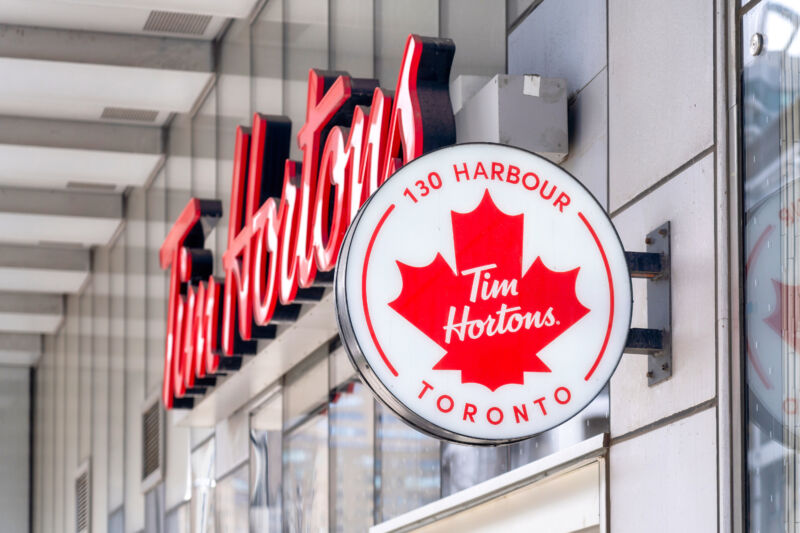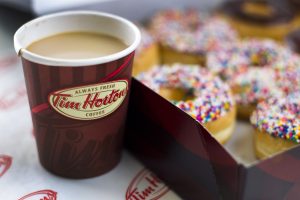
All you had to do, if you really wanted some free coffee and doughnuts, was wake up around 3 am each day and click on some virtual Tim Hortons coffee cups.
It was 3:16 am, actually, that gave a University of Waterloo professor a roughly 80 percent win rate on Tim Hortons' Roll Up To Win game. That wasn't as good as the 98 percent Michael Wallace clocked in early 2020, when he discovered a quirk in the coffee chain's prize distribution scheme, but it still made for great lessons for his students.
"I really like the fact that you can take data from the real world, run it through some math, and find patterns that describe what you see," Wallace told his university's news service. "It's a kind of magic."
For those unfamiliar, Tim Hortons is a coffee and donut shop chain with more than 4,000 locations in Canada and over 500 in the US, most of them in areas near Canada. The chain was founded by and named for a famous hockey player, and its brand can inspire devotion, to the point where Snopes offers a page debunking the myth that Tim Hortons put nicotine in its coffee.
Among the loyalty-inspiring aspects of Tim Hortons is its annual Roll Up To Win contest. Previously known as "Roll up the Rim to Win," the contest previously involved unfurling the rolled-paper rim of a coffee cup to see if a prize claim was printed on the underside, to be collected at a shop location. When the COVID-19 pandemic hit North America, the chain wisely determined that its employees might not want to handle cups that customers had put their mouth on and then pressed with their fingertips. So the Roll Up went online, and that's when the statistics professor started paying attention.
When it was a game based on physical cups, roughly one in six cups had a prize under the rim, a set number that would be offered until supplies ran out. As Wallace wrote soon after the game's early-COVID shift, the new game was something like a slot machine, with each prize available to virtual rollers during a certain timeframe, sometimes as small as 0.1 seconds. Given that some prizes might go unclaimed, Tim Hortons specified in its rules that unclaimed prizes would roll over to another day, up until the last day, for claiming.

Tim Hortons contacted Wallace to figure out how he won ("They were very kind," he told Waterloo, "despite the fact that I probably caused some pretty stressful meetings"). His win rate fell off after the coffee chain changed the game mechanics, but he was still able to use timing, and Canada's multiple time zones, to get his rate up to 40 percent in 2022, he told Waterloo's The Record.
Then this year, Tim Hortons—seemingly unable to help itself or hold institutional knowledge—added real-time data on its website, showing how many prizes were being won at any given moment. Wallace signed some friends up to help him record the prize data across hours and days; the contest forbid computer scripting.
This is how Wallace determined that 3:16 am ET was the best time to play, yielding him an 80 percent win rate. The worst time was 11:46 am ET, when, as he told Waterloo, customers in Eastern Canada are in early lunch, and Western Canadians are still in their morning commute. If you still have Rolls to redeem, you can do so up until April 9, and that lag period between prize availability and final redemption has typically been slow, Wallace found. Sundays, too, are luckier.
Asked about Wallace's continued success, Tim Hortons issued a typically Canadian statement of deference to The Record. "We know there are many Roll Up superfans like Professor Wallace who enjoy strategizing on how to best play the game, and we appreciate their passion for playing Canada's favourite game!"
Wallace may be enthusiastic about the game, but the coffee is just a token. As he told The Record, he was born in England and primarily drinks tea.
Listing image by Tara Walton/Toronto Star via Getty Images
reader comments
69